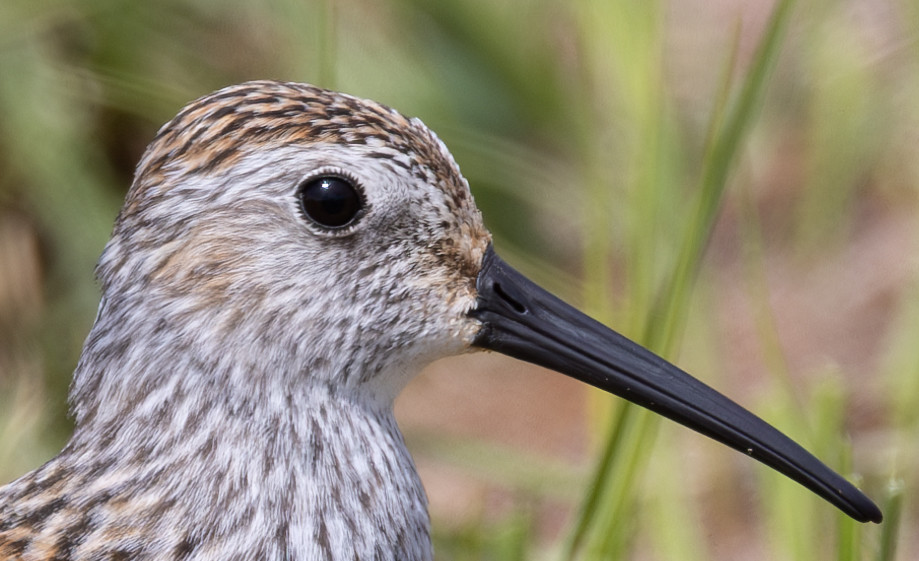Dunlin
| Calidris alpina | Order: Charadriiformes | Family: Scolopacidae (Sandpipers and Allies) |
The Peterson field guide, at least through the first and second editions, called this sturdy, compact shorebird the “Red-backed Sandpiper” for its colorful breeding plumage, though its oldest English name, dating back at least as far as 1531, is dunling, a compound of the English word dun (meaning gray-brown) and the diminutive -ling, describing a small bird in dull winter plumage. It’s found in both the Old and New World.
Here in America, this medium-sized shorebird’s official English name has been the Dunlin since the first edition of the Checklist of North American Birds put together by the American Ornithologists’ Union in 1886. I’m not sure why Roger Tory Peterson broke with convention in calling it the Red-backed Sandpiper in the first and second editions of his field guide, but I’m grateful that I didn’t see any Dunlins for over two years after I started birding, because I looked up every bird I saw in both my Peterson and Golden guides and the different names would have confused me until I grew more familiar with the scientific names. As it was, I was savvy enough to deal with it by the time I saw my first on May 7, 1977 (#245 on my life list).
The Dunlin has a very widespread migration, and although it breeds all the way up at and beyond Hudson Bay, some still linger in northern Minnesota and Wisconsin at the very end of May and beginning of June.
Despite the distinctive long, slightly decurved bill, the Dunlin doesn’t probe deeply into mud or sand for its invertebrate food. Males and females are pretty much identical, though presumably they can tell the difference.
Laura's Published Works
Radio Programs
- Like a Box of Chocolates 2023
- Alaska, Part 3: Birding the Nome-Teller Road 2022
- The Floodgates Open! 2017
- A Walk in Port Wing 2013
- Birding at Ding Darling 2013
- So Much Violence 2013
- Alphabet Soup 2011
- Snowy Plover in Duluth! 2007
- Book Review: The Shorebird Guide 2006
- Horseshoe Crabs 2002
